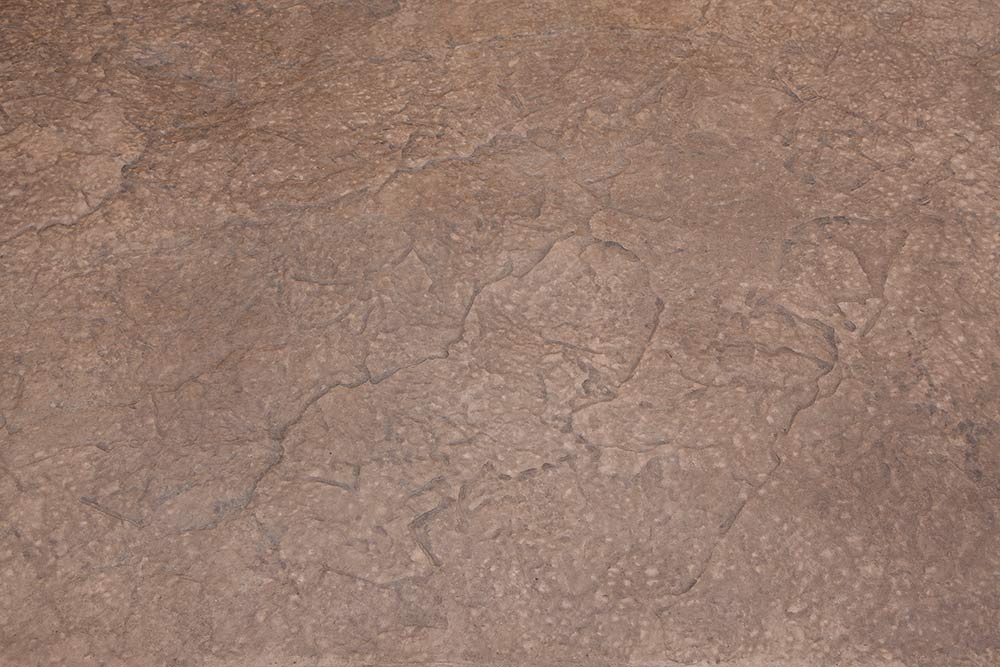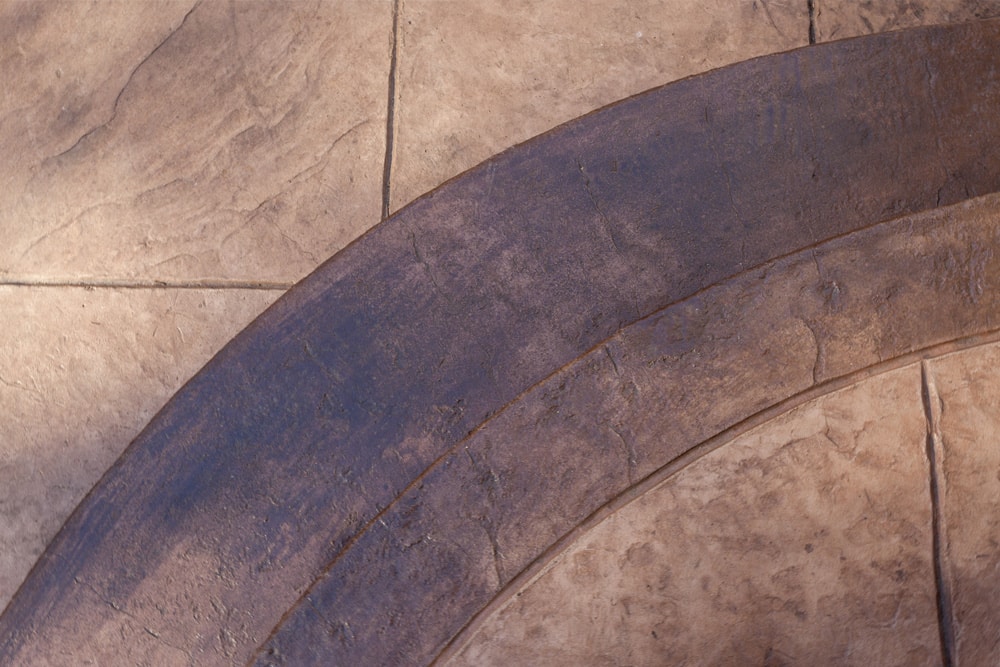Lancaster, PA
Concrete Stains in Lancaster, PA
Add a decorative touch while still allowing the natural texture of the concrete to show through.
Concrete stains are a popular concrete supplies option for residential and commercial garages as they can add a decorative touch while still allowing the natural texture of the concrete to show through. They can be used on both interior and exterior concrete surfaces and are often combined with other coatings, such as sealers or urethanes, to provide added protection and durability.
What Are Concrete Stains?
Concrete stains are a type of concrete coating that penetrates into the pores of concrete to add color or tint. They are used to enhance the appearance of concrete surfaces and can provide a natural, mottled, or variegated look to the surface.
Concrete stains are typically made from a mixture of water, acid, and metallic salts or iron oxides, and they react chemically with the minerals in the concrete to create a permanent color change.

Acid Concrete Stain
Acid-based stains are made from a mixture of water, hydrochloric acid, and metallic salts. They produce a rich, deep color and a marbled effect that is unique to each application.
Acid-based stains can be difficult to work with and require proper ventilation and protective gear to avoid skin and respiratory irritation.

Water-Based Concrete Stain
Water-based stains, on the other hand, are made from a blend of water and acrylic polymers, making them less toxic and easier to use. They can produce a range of colors and are available in translucent varieties.
Concrete Stain Colors in Lancaster, PA and Beyond
Concrete stains come in a variety of colors, making them a great option for customizing your garage floor, patio, countertops, and more! Some of our most popular options include:
White
Grey
Black
Blue
Red
Brown
Specialty Concrete Stains
Specialty concrete stains are a type of concrete stain that provides unique or specialized effects beyond simple coloration. These types of stains are often used to create intricate designs, patterns, or logos on concrete surfaces.
Specialty concrete stains can be used in combination with other types of coatings, such as sealers or epoxies, to create a decorative and durable finish. They are typically made from a blend of acid or water-based chemicals and can produce effects such as mottled or marbled finish or even metallic sheens.

Terracotta
Terracotta is a type of clay-based ceramic that is often used for its warm, earthy tone. However, if you want to achieve the same look and feel of terracotta without using actual delicate terracotta tiles, you can use concrete stains to give your concrete surfaces a terracotta look.
To achieve a terracotta effect, you’ll apply the stain in layers of warm, reddish-brown tones that mimic the color and texture of clay.

Walnut
If you’re looking to give your concrete surfaces a warm and rich look, you might consider using concrete stains to achieve a walnut effect. Walnut-stained concrete can give your basement floors, patios, or walkways the appearance of luxurious hardwood at a fraction of the cost.
To achieve a walnut look, concrete flooring stains are applied to the surface in layers of browns and dark browns until the desired texture is achieved.

Antique
If you’re looking to add a touch of elegance and history to your concrete surfaces, you might consider using concrete stains to give your floors an antique look. Antique stained concrete floors can add depth, character, and a touch of old-world charm to any space.
To achieve an antique effect, a combination of acid-based and water-based stains is used to create a multi-tonal, aged appearance. The acid-based stains react with the concrete to create a mottled, variegated appearance, while the water-based stains add color and depth. Make sure you follow instructions carefully when using antiquing concrete stains.
Coloring Concrete: How Do Concrete Stains Compare?
While concrete is often thought of as a drab and gray material, there are many ways to add color and visual interest to your concrete surfaces. One popular way to add color to concrete is by using concrete stains. But how do concrete stains compare to other coloring options?
Concrete Stain vs Paint
While concrete stains and paints are both used to add color to concrete surfaces, they are very different in terms of their application and durability.
Paint is a surface coating that sits on top of the concrete, while stains penetrate the surface of the concrete. This means that paint is more likely to chip, peel, or flake off over time, while stains are more durable and long-lasting. Additionally, concrete stains create a more natural, mottled appearance, while paint creates a more uniform and solid color.
Concrete Stain vs Dye
Concrete stains are typically acid-based or water-based solutions that penetrate the surface of the concrete, creating a more permanent color change. Dyes, on the other hand, are typically water-based and are designed to penetrate the surface of the concrete at a deeper level than stains. This makes dyes a great option for creating a more uniform and consistent color across the entire surface of the concrete.
Concrete Stain vs Epoxy
Epoxy is a more involved and complicated process than staining. Epoxy is a two-part system that requires mixing and applying a primer, base coat, and top coat. It’s also more expensive than staining and can be more difficult to apply.
However, epoxy on its own provides a high level of durability and can withstand heavy traffic, chemicals, and spills better than stains. Additionally, epoxy can create a seamless, glossy finish, while stains provide a more natural, matte appearance.
How to Stain Concrete: Fixtures & Features You Can Color
Concrete stains are a great option for coloring driveways, patios, basements, garage floors, countertops, and more.
Concrete Floors
Stains are a popular choice for both indoor and outdoor concrete floors and can be used to create a variety of effects, from mottled and natural to vibrant and modern.
Additionally, stains can be used in combination with other decorative techniques – such as stenciling, scoring, or engraving – to create a truly unique and personalized look.
You can learn more about how to stain concrete floors by watching our video tutorials.
Garage Floors
Staining a concrete garage floor is a great way to add color and visual interest to the space while also protecting the concrete from damage. Stains, however, may not be enough to protect your garage floor from heavy vehicles and chemical spills. The right concrete garage floor stain will be durable on its own but may also require a coat of sealant for maximum protection.
Concrete Patios
Stains are a popular choice for coloring concrete patios because they are durable, low-maintenance, and can create a natural, variegated appearance that mimics the look of natural stone. Whether you have a plain concrete patio or one that has been stamped or etched, stains can be used to add color and visual interest to the space.
Concrete Basements
Stains are an excellent choice for coloring concrete basement floors because they can help transform a dull, gray space into an attractive and inviting room. Basements can feel dark and uninviting, but staining your concrete floor can add warmth and character to the room.
Concrete Countertops
Stains are a great option for coloring concrete countertops because they can help create a unique and beautiful surface that’s both functional and durable. Concrete countertops are becoming increasingly popular because they can be customized to fit any style, from modern and minimalist to rustic and industrial.
Your Options When Purchasing Indoor or Outdoor Concrete Stains
Concrete stain colors come in a variety of finishes and can be used to enhance the look of floors, patios, driveways, and more. Additionally, stains can be used in combination with other decorative techniques, such as stamping or engraving, to create a truly unique and custom look.
Concrete Stain and Sealer
One popular option for indoor and outdoor concrete staining is to use a stain and sealer combination product. These products are designed to add color to concrete surfaces while also providing a protective layer that can help prevent staining and other types of damage.
Stain and sealer combinations are available in both water-based and solvent-based formulas and come in a variety of colors and finishes. Some products also offer additional benefits, such as slip-resistance, UV protection, or resistance to chemicals or abrasion. Interior and exterior concrete stains are similar but may require different finishes.
Stamp and Stain Concrete
Another option for creating a custom and unique look for indoor or outdoor concrete surfaces is to use stamping and staining techniques together.
Stamping involves creating patterns or designs in wet concrete using stamps or molds, while staining involves applying color to the surface of the concrete. By combining these techniques, you can create a range of effects, from natural stone or tile patterns to intricate designs or logos.
Concrete Stain Ideas
There are a wide variety of ways to stain your concrete floor, countertops, patios, walkways, and more. Different techniques will create a different effect on the concrete, allowing you to create something beautiful and unique for your home.
Concrete Stain Before and After
Concrete floor stain has the ability to completely transform the appearance of your concrete.
How to Stain Concrete to Look Like Wood
Did you know that you can stain your concrete to look like wood? If you want the weathered look of wood on a more durable surface, this is a great option.
Where to Buy Concrete Acid Stain
If you need to buy acid stain for your project, our team can help you choose the right option for your acid stain concrete.
Frequently Asked Questions About Concrete Stain
Can you stain concrete?
Yes! Staining concrete is an excellent way to add color to the surface.
How do you stain concrete?
To use a stain for concrete, the surface must be thoroughly cleaned and prepared. Then, a concrete stain is applied with a sprayer or brush in multiple coats until the desired color is achieved. Once the stain has dried, a concrete stain sealer is usually applied to protect the surface and enhance the color.
Can you stain over stained and sealed concrete?
It is possible to stain over stained and sealed concrete, but the process can be more challenging and requires some additional preparation. All sealers need to be removed and the surface open enough to accept stain, and even then it may not penetrate properly.
However, if the sealer is damaged or the color of the existing stain is not desired, then the surface may need to be stripped and re-stained. It is important to test a small area first to ensure that the new stain will adhere properly and create the desired effect.
Can you stain old concrete?
Yes, it is possible to stain old concrete, but it is important to prepare the surface properly to ensure that the stain adheres and produces the desired color.
Old concrete may have existing stains, sealers, or other contaminants that need to be removed before staining. This can be done through various methods such as pressure washing, grinding, or chemical stripping. The surface must be clean and porous to allow the stain to penetrate and create the desired effect.
How much does it cost to stain concrete?
It’s hard to answer this question without information like what concrete surface you want to stain (patio, driveway, countertop, etc), how large it is, and what type of stain you want to use to achieve the desired outcome. Our team can help you determine the best product for your project and how much it will cost.
Do natural ways to stain concrete work?
How do I find concrete stainers near me?
Choosing your concrete color isn’t the step you need to take. If you’re not staining the surface yourself, you’ll need to find a concrete stainer. Online directories like Google Maps, HomeAdvisor, etc are a great way to find a provider. Make sure you find someone that specifically mentions “concrete staining” or expertise with materials like “powder stain.”

Stain Concrete With Confidence With Concrete Supplies from Paradise Concrete
Paradise Concrete is a reputable supplier of high-quality concrete stains that are perfect for homeowners, contractors, and DIYers who want to enhance the look of their indoor or outdoor spaces. We serve those in Pennsylvania, Delaware, Maryland, New Jersey, and New York. If you need help picking out the best concrete stain for your needs, our team can help!
